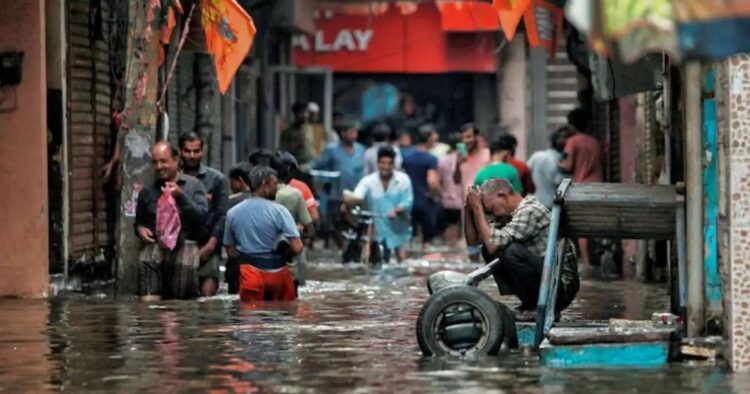Delhi experienced light rain on Saturday, following a historic rainfall event on Friday that brought the city to a standstill. The India Meteorological Department (IMD) reported that Delhi received 228.1 mm of rain within 24 hours on Friday, marking the highest rainfall in a single day in June in 88 years.
This led to severe waterlogging, power outages, and other disruptions across the city. The IMD has forecasted more light to moderate rain over the next five days, with some areas expecting heavy showers until July 1.
Several parts of Delhi remain waterlogged, and many areas are facing prolonged power cuts due to the heavy rain. At least six people have died in rain-related incidents, among the victims were two children who drowned in a rainwater-filled ditch in New Usmanpur, and a man who drowned at a flooded underpass in Shalimar Bagh.
In addition, three laborers were found dead under the debris of a collapsed under-construction wall in Vasant Vihar.
Infrastructure and Public Services Affected
The heavy rain caused significant infrastructure damage. The Chandrawal WW-II pump house experienced a fault, disrupting water supply in several areas. The Delhi Jal Board announced that the water supply issue would persist through Saturday.
Terminal-1 of the Delhi airport also closed due to a canopy collapse that killed one person and injured four others. All flights have been redirected to Terminals 2 and 3.
The heavy rain uprooted trees in various areas, damaging properties and parked cars. In some residential zones, residents had to wade through waist-deep water to exit their homes. In Kishanganj, passengers stuck in a bus under a flooded underpass were rescued by police and emergency teams, who used life jackets to ensure their safety.
Government and Emergency Response
The Delhi government has established a 24-hour control room to monitor the waterlogging situation. Minister Saurabh Bharadwaj announced the deployment of mobile pumps by the Municipal Corporation of Delhi (MCD) and Public Works Department (PWD) to remove water from flooded areas.
Quick response teams have also been formed to address waterlogging complaints promptly. Lieutenant Governor VK Saxena has directed officials to set up an emergency control room and deploy static pumps to manage the waterlogging.
The IMD attributed the intense thunderstorms and heavy rain to multiple large-scale monsoonal weather systems and thermodynamic instability in the atmosphere. These factors combined to create the severe weather conditions that Delhi experienced on Friday.
Delhi is grappling with the aftermath of unprecedented rainfall that caused extensive flooding, power outages, and tragic loss of life. Authorities are working tirelessly to manage the situation and restore normalcy to the city.

















Comments